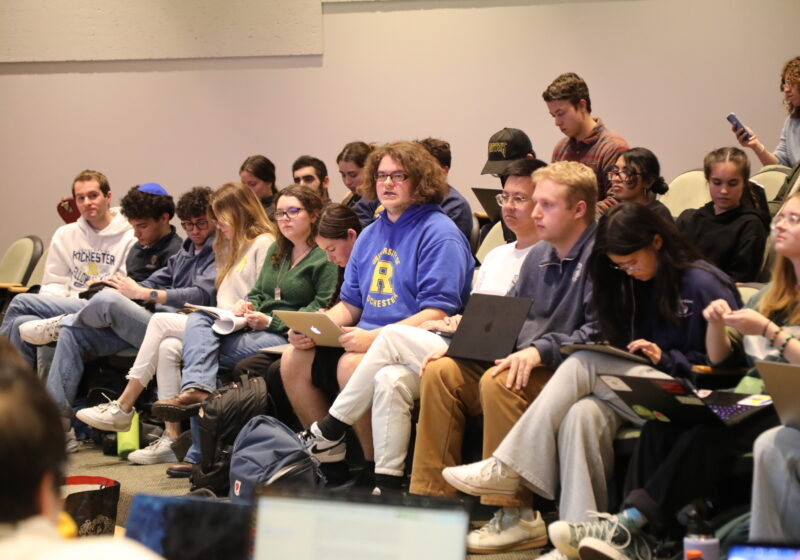This semester, UR Security has done a great job reporting on offenses that have occurred off campus.
After the Sept. 26, Oct. 24 and Oct. 28 robberies, we quickly received e-mail notifications about the attacks. University Security also posted these notices on its Web site, which is accessible for all to see. These security notifications included tips on how to stay safe, as well as updates that the University was working with the Rochester Police Department and that University Security has stepped up its efforts by patrolling Wilson Blvd. along the river.
Security has also been successful in updating students about security issues through the Security Update, which is printed in the Campus Times each week.
This fall, we received Security’s annual report for 2006 in its yearly publication, “Think Safe.” “Think Safe” included a list of the violent crimes that were reported to the University within the past three years.
These notifications are important for students to find out what is happening on campus and for them to better protect themselves. Without security updates, many students remain unaware about crime on campus and have no idea how prevalent security offenses can be.
This was exactly the logic behind the 1990 passage of the Jeanne Clery Disclosure of Campus Security Policy and Campus Crime Statistics Act. This federal law was passed in honor of Jeanne Ann Clery, who was raped and murdered in her residence hall at Lehigh University in 1986. After her death, her parents were outraged that neither Jeanne nor they were notified about the 38 violent crimes that occurred on her college campus in the three years before her attack. The Clery Act now mandates that all college campuses give students timely warning about crimes that represent a threat to the safety of students and employees and publish a yearly report that includes the number of violent crimes within the last three years.
However, at our university, we have not been notified by e-mail or the Campus Times about the types of violent crimes that Jeanne Clery actually experienced. According to the 2006 “Think Safe” Report, four rapes were reported on the River Campus last year. In addition, there were three reported incidents of “forcible fondling.”
Unlike the e-mails that notify students about the muggings on Genesee Street, the only way students can find out about reported sexual assault is through “Think Safe,” which is published once a year. In my opinion, this reporting violates the Clery Act, which demands “timely warning.”
Unfortunately, this is a very complicated issue because the vast number of rapes and sexual assaults happen by someone the victim knows. This often makes it very hard for a victim to report his or her attack, since he or she is likely to come in contact with his or her violator again soon. Publishing the incident in an e-mail to the University may increase these feelings since “victim blaming” is so prevalent in our culture, especially in regards to sexual assault. Very few people are going to blame someone who has his or her wallet stolen on Genesee Street of “asking for it” or “making it up,” but friends of the victim and the attacker often make these excuses and place blame on the victim after sexual assault.
That being said, I by no means hope to encourage the already prevalent feelings of unease and shame that victims of sexual assault often experience. However, I do think it is necessary to update the campus community about these assaults more than once a year.
A mugging by a stranger off campus is much less of a serious threat than a rape committed by someone living on my own hall. It is important for students to be aware of how common sexual assault is on our campus, especially since this issue is so underreported to begin with.
I hope that the University will consider revising its position on this issue so that students can be aware of the fact that sexual assault and rape do occur on our campus, and so that they can take the necessary steps to protect themselves.
Nigro is a member of the class of 2009.



